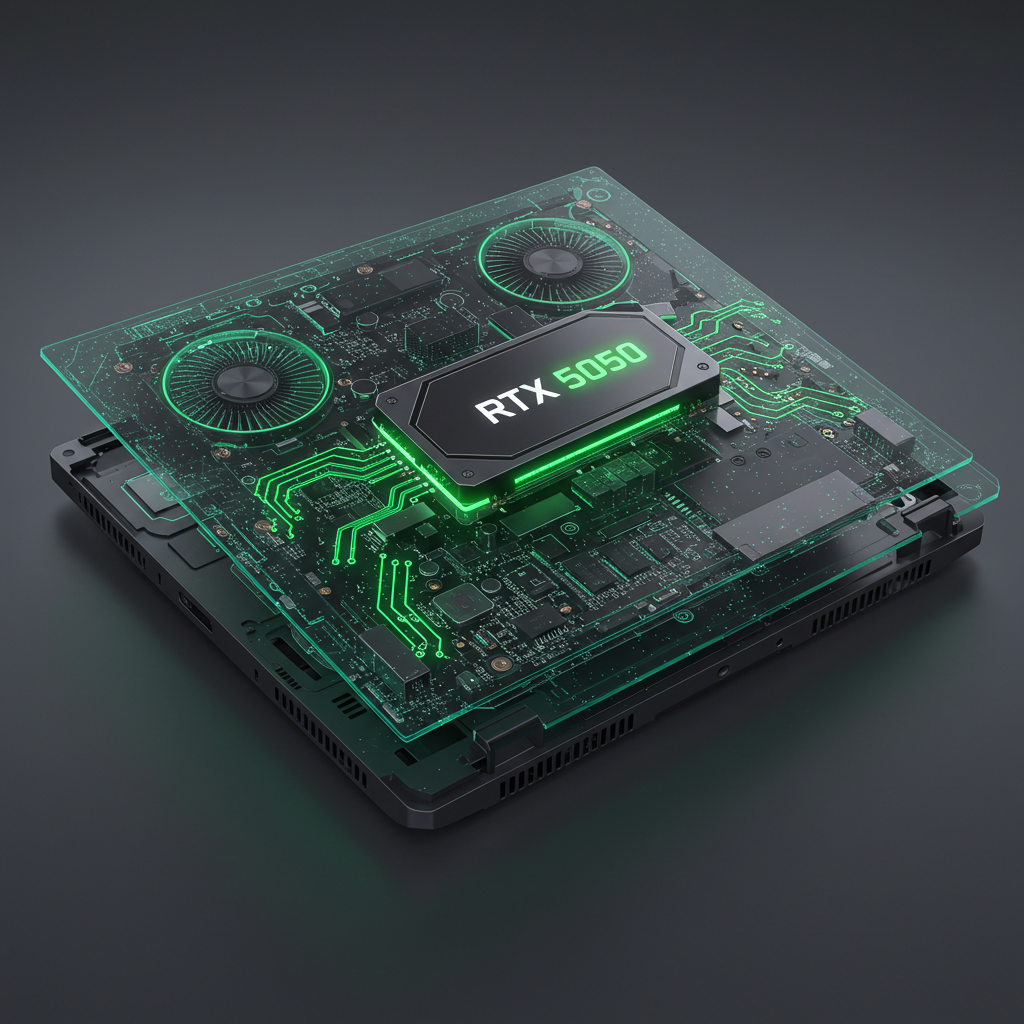In an unusual but telling move, NVIDIA’s next-generation entry-level GPU, the GeForce RTX 5050, has made its debut not as a desktop card, but as the powerhouse for a new wave of gaming laptops. This “laptop-first” launch strategy has given the public its first concrete look at the specifications for NVIDIA’s next generation of entry-level gaming hardware, and the details reveal a significant upgrade where it matters most: memory technology.
The First Wave of RTX 5050 Laptops
Major manufacturers have already begun announcing new laptops built around the RTX 5050 mobile GPU. In the US, companies like MSI and Acer are rolling out new models, with MSI’s Katana 15 targeting the competitive $999 price point. These initial offerings position the RTX 5050 as the new standard for entry-level to mid-range gaming notebooks, pairing it with modern CPUs like Intel’s Core i7 series, 16GB of RAM, and high-refresh-rate displays.
Under the Hood: The Official Specs
The early product listings have confirmed the technical specifications for the mobile variant of the RTX 5050, giving us a clear picture of its capabilities.
- CUDA Cores: 2,560
- VRAM: 8GB GDDR7
- Memory Interface: 128-bit
- Memory Bandwidth: 384 GB/s
- TDP (Thermal Design Power): Up to 115W
Analysis: The GDDR7 Surprise
The most significant reveal in this spec sheet is the inclusion of 8GB of GDDR7 VRAM. Prior to this, many industry watchers speculated that NVIDIA might use the older, cheaper GDDR6 memory for its entry-level 50-series cards to keep costs down.
The fact that even the mobile, entry-level 5050 is equipped with the latest memory standard is a major indicator of NVIDIA’s strategy. It strongly suggests that the eventual desktop version of the RTX 5050 will also feature GDDR7. This move ensures a higher performance baseline across the entire product stack, with the 384 GB/s of memory bandwidth putting the 5050 on par with the mobile version of its more powerful sibling, the RTX 5060, in that specific metric.
Performance Expectations and Market Position
Based on these specifications, the performance of RTX 5050-equipped laptops is expected to land comfortably between the last-generation RTX 4050 and the current-gen mobile RTX 5060. This will provide a solid generational performance uplift, making it a capable GPU for 1080p gaming with respectable frame rates in modern titles.
While the 8GB VRAM capacity might seem modest compared to high-end cards, it is an appropriate and expected amount for a GPU in this entry-level segment. It’s designed to provide a great experience for mainstream and occasional gamers without the price premium demanded by larger memory pools.
Conclusion: A Glimpse of the Mainstream Future
The official desktop RTX 5050 release is still on the horizon. However, its early debut in the laptop market has provided a clear and telling preview of NVIDIA’s vision for the future of mainstream gaming. With GDDR7 memory as the new standard and a focus on delivering a robust 1080p experience, the RTX 5050 is set to become the new baseline for millions of gamers on a budget.

